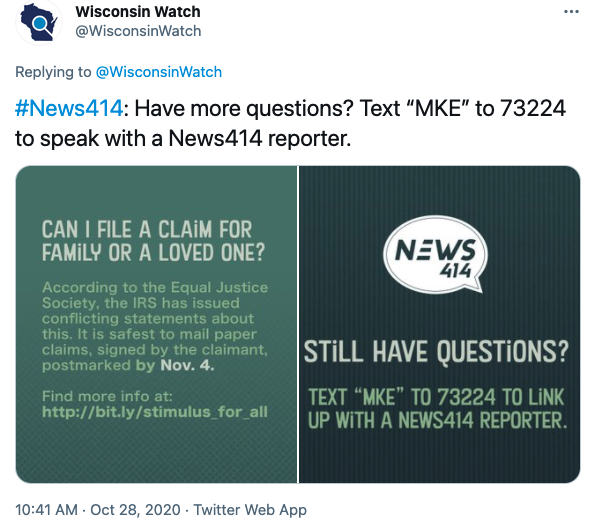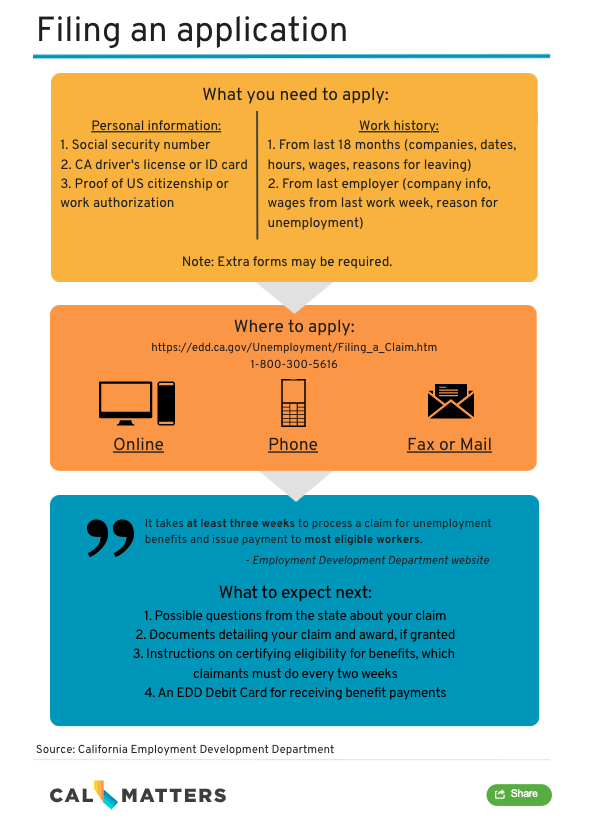
By: Vignesh Ramachandran for the Institute for Nonprofit News
Introduction
Where can I get a vaccine? Will I get evicted if I can’t afford my rent this month? When are my kids’ schools opening? These are just a few of the many questions journalists have stepped up to answer for their audiences during the COVID-19 pandemic.
This type of journalism that serves readers directly and focuses on providing audiences with actionable news they can use is called “service journalism.” And service journalism has become all the more important over the past year. Now, service journalism could be the difference between someone knowing how to protect themselves against the spread of COVID, or not.
A journalist at a Houston TV station summed it up well: “We are now doing more than we bargained for,” ABC13 anchor and reporter Chauncy Glover told the AP. “We have to be smarter on these topics. We have to know more. For so many people, it may be life or death.”
Take it from INN’s members. Sahan Journal in Minnesota launched a video series to help readers better understand fundamental questions about COVID-19 vaccine eligibility and availability. The videos are tailored to local immigrants and refugees and available in English, Spanish, Hmong and Somali. In Illinois, Block Club Chicago created a local phone number and email address for people to ask questions and get connected to resources about COVID-19.
In the past few weeks we again observed how service journalism saves lives. As cold weather conditions, ice and snow hit communities across Texas in February, the Austin-based Texas Tribune quickly launched a text phone number for readers to get breaking news about the situation, power updates, tips for how to help others and opportunities to ask the newsroom questions about the crisis.
With a mission to serve the public, nonprofit newsrooms are naturally inclined to produce this kind of high-impact, actionable service-oriented journalism. See below for just a few examples of service journalism in practice across the Institute for Nonprofit News’ 300+ member newsrooms.
Examples across INN newsrooms
1. El Tímpano
El Tímpano focuses on participatory local news for and with the Latinx and Mayan immigrant communities in Oakland, California, and has been deeply involved in service journalism from its founding days.
What they did: As the pandemic spread to El Tímpano’s community in Oakland — which is situated on the eastern side of the San Francisco Bay Area — Bair said her organization has provided key information to those among the hardest hit by the economic and public health crises. “We have ...disseminated news and resources, and answered their questions on everything related to the pandemic — from public health guidance to information about food distribution sites, new renter protection policies and opportunities for financial assistance,” Bair explained.
Readers also provide a key feedback loop for El Tímpano, directing the organization to what information they should research and distribute, and what issues they should investigate. For instance, when families were unable to log their children in to their remote learning classes in the fall, readers let the newsroom know. This feedback sparked the organization to ask deeper questions and produce investigative and accountability journalism.
TIP: Ask your readers what kind of journalism they want, and listen. Prior to launching, El Tímpano spent nine months listening to local Latinx and Mayan immigrants to find out what they wanted from Spanish-language media. The process involved speaking to community leaders, holding listening sessions and conducting surveys. One of readers’ key requests, according to Founding Director Madeleine Bair, was “actionable news.” This helped the newsroom’s founders decide what kind of journalism to focus on early on.
The outcome: A better community ask and answer process. A January 2021 story, for example, was reported and published in collaboration with The Oaklandside to hold local county health officials accountable for not following up with residents who tested positive for COVID-19. “Often, the problems they raise have yet to find a solution,” Bair wrote in an October 2020 Medium post. “But by providing a platform for them to raise their voices and by amplifying their questions, insights and stories, we can facilitate a process for the community to find its own answers and continue asking important questions.”
2. Wisconsin Watch and the Milwaukee Neighborhood News Service (NNS)
Wisconsin Watch produces investigative journalism in Wisconsin and leverages service journalism both to serve its community with vital information, and to fuel its own reporting. The Milwaukee Neighborhood News Service (NNS), which is based in the Diederich College of Communication at Marquette University, covers Milwaukee’s neighborhoods.

What they did: Wisconsin Watch is working with Outlier Media and the Milwaukee Neighborhood News Service (NNS) on a text-messaging initiative — dubbed News414 — to send Milwaukee residents useful information during the pandemic, such as where to find nearby food distribution sites and how to understand tenants rights. The service is not just a one-way street. Readers can ask questions or share information and the service will connect them with a reporter who will try to help. “I’ve been telling people that it’s not just accessing information, it’s getting support to navigate information if you don’t understand it,” Jeff Roman, project manager for News414, said in a May 2020 article. “It’s not just a list of resources or an article. There is a reciprocal relationship people can develop to help them understand and navigate life.”
So far, the initiative has served more than 2,200 people in the community through upwards of 336,000 text messages. They’ve also had conversations with about 700 of those subscribers.
“We delivered crucial information to residents during a time when the coronavirus upended the economy and society, leaving them more vulnerable than ever,” said Ron Smith, NNS’ editor and project director. “We are proud that this was achieved despite the fact that the pandemic made it nearly impossible to meet in person with residents, as we had originally built our engagement plan.”
News414 will translate its texting services into Spanish, with a goal of engaging Milwaukee’s Latino-majority South Side neighborhoods in 2021. In addition to using text messaging, the coalition tapped Facebook and Instagram to share information with the community. The result: NNS’ Instagram account has grown from 1,600 followers to more than 2,700.
The outcome: Trust with the community and more explanatory, investigative reporting. Smith said all the service journalism efforts, particularly around information with rent assistance or finding food, have helped build trust with the community. There were a couple cases where reporters helped parents find free beds for their children. “That was an answer from God,” a father told one of the reporters.
The project has also helped fuel explanatory, investigative and short-term journalism from Wisconsin Watch and NNS about housing and evictions. “These reports were seen and sometimes heard by large audiences statewide, expanding Wisconsinites’ and policymakers’ knowledge of these critical issues,” Smith said. The project also informed a major Wisconsin Watch/NNS story about policing’s outsized role in Milwaukee’s budget.
3. inewsource
inewsource serves the San Diego region with data-driven investigative and accountability journalism.
What they did: inewsource wanted to provide voters the information they needed ahead of Election 2020. “The November election was unlike any other in our history,” said Managing Editor Laura Wingard. “Conducting it amid the COVID-19 pandemic meant massive changes for how voters in San Diego County would cast ballots.” The focus, according to Wingard, was on voter education, and explaining who stood to win and lose under the new voting system.

So inewsource created a digestible guide to help local voters cast their ballots by mail or in-person — in addition to how-to videos in English and Spanish for mail and in-person voting options. The guide also included lookup maps, so people could locate their nearest ballot dropoff location or polling place. The newsroom included a callout in the guide, asking voters if they had any questions so they could answer them in a frequently asked questions guide. These efforts were key for inewsource audiences, especially, Wingard said, “with so much misinformation and talk of potential fraud leading up to the Nov. 3 election.”
Tip: Create feedback loops. Some newsrooms create texting services or dedicated email addresses for audience questions. For a lighter lift, ask your readers directly in your articles if they have any particular questions, or if the reporter missed something in your coverage. Encourage your readers to get in touch when something you covered hasn’t worked or been successful for them.
The outcome: Uncovering disparities. Because the pandemic forced local election officials in San Diego County to reduce 1,600 polling places to just 235, inewsource did accountability reporting around ZIP codes and found disparities among some neighborhoods that saw more reductions than others. Wingard said the newsroom is continuing to examine if the cuts affected turnout in certain areas.
4. Planet Detroit
Planet Detroit focuses on explanatory, solutions-based and investigative reporting about the environment for Detroit and Michigan at large.
What they did: The organization’s “Ask Planet Detroit” tool invites readers to ask health and environment-related questions that the newsroom could then investigate. The easy-to-use Typeform asks for the respondent’s phone number or email so the newsroom can get in touch if needed. A reader can also optionally share their zip code, which helps Planet Detroit find information most relevant to them. Readers can also reach out via Planet Detroit’s text messaging service or via email.

The outcome: More engagement with readers. Planet Detroit’s publisher and editor Nina Misuraca Ignaczak said they’ve received dozens of questions so far. The result has been short-form articles that answer inquiries about everything from how air pollution impacts children to understanding recycling access in multi-family homes. A reader question asking what is being done about the water quality of the Rouge River was answered with a conversational explainer that included reporting and interviews about restoration projects, what residents are doing and lingering challenges.
“Because the environmental issues we face can seem overwhelming and confusing, we are focused on providing background, context and covering solutions (but not advocating for them),” Planet Detroit said in its manifesto.
Tip: Consider format and distribution. In many situations, your readers could find short-form Q&As more helpful than longer, explanatory articles. Consider the best platform to reach your audiences in the moment, too. When The Texas Tribune’s audiences were facing an infrastructure crisis after a winter storm, the news outlet launched a texting service readers could use to get updates.
5. CalMatters
CalMatters is focused on covering California politics and policy and providing context to issues like the environment, education, health care, criminal justice and economic inequality. The newsroom has worked with more than 200 media partners in California to reach more audiences across the state.
What they did: CalMatters incorporated service journalism into several editorial projects.
Among the most successful projects, according to Publisher and Chief Operating Officer Marcia Parker, have been explainers that provide helpful information on subjects like unemployment benefits or coronavirus relief. CalMatters’ unemployment explainer answers questions about how to apply for unemployment in California, how much it pays and how the pandemic has impacted government assistance programs. The financial help explainer helps Californians find resources for kids missing out on school lunch, how to secure hotel rooms for unhoused people and assistance available for undocumented immigrants. The resources, also available in Spanish, are designed with card-like sections that include clear, digestible graphics.

Ahead of Election 2020, CalMatters also created an election guide with one-minute videos that broke down 12 propositions on California’s ballot.
The outcome: More than five million Californians used and viewed the videos, Parker said, which were available in English, Spanish, Vietnamese, Korean and Chinese. CalMatters’ website also provided context about each proposition. For example, in addition to embedding the video, Proposition 14 on stem cell research was explained through text explanations about what the proposition is, why California is voting on it and background about the stances and financing of both supporters and opponents. The page also lists names of major people, organizations and donors backing the support and opposition to the prop. A five-question “Gimme Props” quiz walks readers through the proposition to help comprehend it all. CalMatters also links out to other relevant news stories about the proposition, so readers can dig deeper.
TIP: Advice on how to get started with service journalism.
Milwaukee Neighborhood News Service’s Smith says it’s key to have a mindset of being in the reader’s shoes. “We seek to connect readers to services that are out there but may not be aware of. Because we are in regular contact with frontline nonprofits that serve our audience, we do good shoe leather reporting to figure out how we can help and how we can serve.”
CalMatters’ Parker recommends learning into your audiences’ most essential questions and exploring new formats — like webinars — in order to best reach them with that information. “Don’t be afraid to pivot when you see a need emerge from your readers.”
Conclusion
From engaging audiences to answering reader questions, INN newsrooms provide service journalism when it’s needed most. In the current public health crisis, the approach and infrastructure to quickly answer fundamental questions has been vital for communities across the country.
Some similarities we notice across the examples above: experimenting with platform and format (e.g., text-based services), creating feedback loops with audiences, and thinking about the language in which resources should be provided. More importantly and consistently, these newsroom products are focused on serving audiences, above all.
This shift to thinking about reader needs is part of a movement in journalism led by folks like INN’s Courtney Hurtt (formerly at WDET), Sarah Alvarez of Outlier Media, Eve Pearlman and Adriana Garcia of Spaceship Media, Mike Rispoli of the News Voices Project of Free Press and Bettina Chang and Darryl Holliday of City Bureau. We recommend reading Is Your Journalism a Luxury or Necessity? for more on this mindset shift to serving critical reader needs.
Want to stay informed about the latest in nonprofit news? Subscribe to our weekly INNovation newsletter.